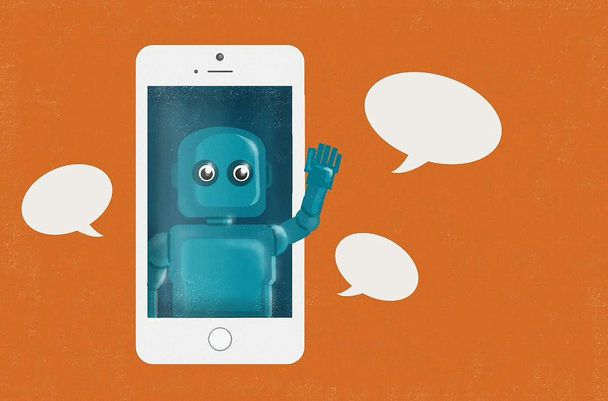Talk to me

Enabled by major advances in natural language processing and natural language understanding, chatbot launches are exploding. As tech companies open up their messaging platforms to developers, the growth of these sophisticated, unmanned algorithms that can ‘talk’ to users has been massive: three months after Facebook announced its platform for building bots, Facebook Messenger had more than 11,000 bots.
Their potential is vast. But Ronny Fehling, who heads initiatives in artificial intelligence and cognitive computing at Airbus, is quick to urge caution. A chatbot must answer a couple of classic tests, he says. First, is it better, cheaper or faster? If not, then intelligent search via a website or app is often a better option. Second, does the chatbot try to replace tasks that people love doing or hate doing?”
In the simplest terms, chatbots are artificial intelligence-based applications that automate processes, he says. At Airbus, chatbots are seen as a part of robotic process automation. “They should strive to automate processes in a business-to-human interaction context and aim to replace those repetitive tasks that people hate doing.”
For Airbus, the value in chatbots is their ability to use machine learning to deliver domain knowledge. “The chatbot needs to be trained on three things: domain classification; data content, i.e. the information you actually want to search for; and interaction models.”
Currently, however, most chatbots are not successful, Fehling says. “We are definitely in a hype cycle, but there are a couple of cases where chatbots really make sense: when you have long conversations, a lot of frustrating back and forth, typically over email, between humans. Or in HR, for instance, where lots of people ask the same or similar questions.”
24/7 support
Simple frequently asked questions are a great place to look to develop chatbots. “For example, our support engineers typically have to ask a lot of questions before they can provide an answer,” Fehling explains. “But a chatbot could have a fully-fledged conversation and prepare an answer that the engineer can verify. If it is correct, we reduce the cognitive workload for our support engineers and the time to closure for the support ticket.”
Chatbot in the cockpit
Airbus Research & Innovation Chief Jean Jacques Toumazet is also involved in a chatbot project, one that could lead to the introduction of a virtual assistant in the cockpit to assist pilots in resolving complex situation management issues.
“Perhaps you need to divert to another airport and you have 250 passengers on board,” he says. “Does this airport have the correct hotel capacity? Maybe the best trade-off is to divert to another airport that can accommodate all the passengers.”
Toumazet also envisages a chatbot or virtual assistant that can anticipate problems before they arise. “We are looking at how to predict whether the pilot might make a hard landing – when the aircraft touches down at high speed with more force than normal. This is not really based on interaction, like a chatbot, but a machine learning system that can understand what is going on and then warn you without waiting for you to ask a question.”
Considering sustainability
On the ground, Michael Sillus, who works on innovations at Airbus in Hamburg, is developing a chatbot for the shop floor that will help with technical questions as part of Airbus’ vision of a factory of the future. “We could have a bot to help find the right answer to de-block a manufacturing situation, for example; a first-line, design organisation support inside the factory.”
He also points to a chatbot currently underway that will help project managers consider sustainable development goals as laid out by the UN. “As an initial proof of concept, we are building an ecoDESIGN BOT. It will be integrated into a framework of other bots to help project managers ask the right questions and provide data to support the correct decisions, thus avoiding expensive and time-consuming life cycle assessments afterward.”
Giving value to data
For Laurent Pouget, the long-term goal is to develop a system that can create chatbots across the company. “The rise of chatbots will change how we work, communicate and access knowledge. Today, nearly everything is digitised, but it is a black hole; we can’t take advantage of it because there is too much information and it is difficult to handle. The chatbots will be able to give value to what is digitised.”